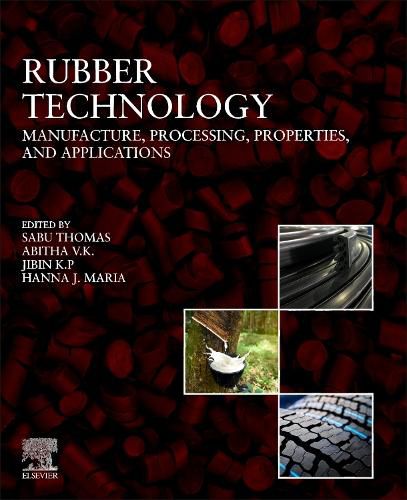Readings Newsletter
Become a Readings Member to make your shopping experience even easier.
Sign in or sign up for free!
You’re not far away from qualifying for FREE standard shipping within Australia
You’ve qualified for FREE standard shipping within Australia
The cart is loading…






Rubber Technology: Manufacture, Processing, Properties, and Applications brings together detailed and comprehensive information on rubber types and processes, guiding the reader from fundamentals through to the latest innovations in the field. Sections introduce structure-property relationships, compounding, processing, testing, and mechanics, and provide methodical discussions on rubber by type, covering natural rubber, synthetic rubbers, liquid rubbers, rubber composites, nanocomposites, and rubber-based blends, as well as major properties such as self-healing, shape memory, and functionalization. The penultimate section covers key aspects in the engineering and industrial utilization of rubber, including modeling and simulation, product manufacture, quality management, and applications.
Finally, the book examines themes relating to the recycling and lifecycle of rubber-based products. This is a valuable resource for academic researchers and advanced students across materials science and engineering, and those from other disciplines who are looking to understand rubber, as well as industrial scientists, R&D, and engineers.
$9.00 standard shipping within Australia
FREE standard shipping within Australia for orders over $100.00
Express & International shipping calculated at checkout
Rubber Technology: Manufacture, Processing, Properties, and Applications brings together detailed and comprehensive information on rubber types and processes, guiding the reader from fundamentals through to the latest innovations in the field. Sections introduce structure-property relationships, compounding, processing, testing, and mechanics, and provide methodical discussions on rubber by type, covering natural rubber, synthetic rubbers, liquid rubbers, rubber composites, nanocomposites, and rubber-based blends, as well as major properties such as self-healing, shape memory, and functionalization. The penultimate section covers key aspects in the engineering and industrial utilization of rubber, including modeling and simulation, product manufacture, quality management, and applications.
Finally, the book examines themes relating to the recycling and lifecycle of rubber-based products. This is a valuable resource for academic researchers and advanced students across materials science and engineering, and those from other disciplines who are looking to understand rubber, as well as industrial scientists, R&D, and engineers.